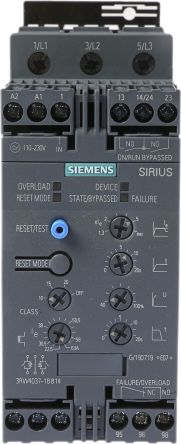Starter 41 Siemens Download
Number of employees 379,000 (2018) Process Industries and Drives, Digital Factory, Energy Management,, Mobility, Power and Gas, Power Generation Services, Wind Power and Renewables, Building Technologies Website Siemens ( German pronunciation: or ) is a German headquartered in and and the largest industrial manufacturing company in Europe with branch offices abroad. The principal divisions of the company are Industry, Energy, Healthcare (), and Infrastructure & Cities, which represent the main activities of the company.
View & download of more than 8049 Siemens PDF user manuals, service manuals, operating guides. Siemens manuals. Remote Starter.
The company is a prominent maker of medical diagnostics equipment and its medical health-care division, which generates about 12 percent of the company's total sales, is its second-most profitable unit, after the industrial automation division. The company is a component of the. Siemens and its subsidiaries employ approximately 379,000 people worldwide and reported global revenue of around €83 billion in 2018 according to its earnings release. Freizeit dialog na nemeckom full. Co-founder of. Was founded by and on 12 October 1847. Based on the, their invention used a needle to point to the sequence of letters, instead of using. The company, then called Telegraphen-Bauanstalt von Siemens & Halske, opened its first workshop on 12 October.
In 1848, the company built the first long-distance telegraph line in Europe; 500 km from Berlin to. In 1850, the founder's younger brother, Carl Wilhelm Siemens, later, started to represent the company in London.
The became a branch office in 1858. In the 1850s, the company was involved in building long distance telegraph networks in Russia. In 1855, a company branch headed by another brother,, opened in, Russia.
In 1867, Siemens completed the monumental line stretching over 11,000 km from to. First, built in 1879 by company founder Werner von Siemens. In 1867, Werner von Siemens described a without permanent magnets.
A similar system was also independently invented by, but Siemens became the first company to build such devices. In 1881, a Siemens driven by a was used to power the world's first electric street lighting in the town of, United Kingdom. The company continued to grow and diversified into. In 1887, it opened its first office in Japan. In 1890, the founder retired and left running the company to his brother Carl and sons Arnold and Wilhelm. 1901 to 1933 [ ].
British Siemens advertisement from the 1920s era. During the 1920s and 1930s, S & H started to manufacture,,. In 1932, (Erlangen), (Rudolstadt) and (Berlin) merged to form the (SRW), the third of the so-called parent companies that merged in 1966 to form the present-day Siemens AG.
He eventually rejoined DRDO and became closely involved in India’s space programme. An alumnus of the prestigious Madras Institute of Technology, Kalam began his career as a scientist at the Aeronautical Development Establishment of the Defence Research and Development Organization (DRDO). Apj abdul kalam biography pdf. He was later transferred to the Indian Space Research Organisation (ISRO) where he served as the project director of India's first Satellite Launch Vehicle (SLV-III). He served as the Chief Scientific Adviser to the Prime Minister in the 1990s before becoming the President of India in 2002. He made significant contributions to India's Pokhran-II nuclear tests in 1998 which established him as a national hero.
In the 1920s, Siemens constructed the Hydro Power station on the in the then, and it was a world first for its design. The company is remembered for its desire to raise the wages of its under-paid workers only to be overruled by the government. 1933 to 1945 [ ]. A Siemens truck being used as a vehicle in 1932 Siemens (at the time: ) exploited the forced labour of deported people in. The company owned a plant in. During the final years of, numerous plants and factories in Berlin and other major cities were destroyed by Allied air raids.
To prevent further losses, manufacturing was therefore moved to alternative places and regions not affected by the air war. The goal was to secure continued production of important war-related and everyday goods. According to records, Siemens was operating almost 400 alternative or relocated manufacturing plants at the end of 1944 and in early 1945. In 1972, Siemens sued German satirist F.C. Delius for his satirical history of the company, Unsere Siemenswelt, and it was determined much of the book contained false claims although the trial itself publicized Siemens' history in Nazi Germany. The company supplied electrical parts to.

The factories had poor working conditions, where malnutrition and death were common. Also, the scholarship has shown that the camp factories were created, run, and supplied by the, in conjunction with company officials, sometimes high-level officials. Siemens businessman and member is, however, credited with saving many Chinese lives during the infamous. He later toured Germany lecturing on the atrocities committed by Japanese forces in Nanking.
1945 to 2001 [ ] In the 1950s, and from their new base in, S&H started to manufacture,,,. [ ] In 1966, (S&H, founded in 1847), (SSW, founded in 1903) and (SRW, founded in 1932) merged to form Siemens AG. In 1969, Siemens formed Kraftwerk Union with by pooling their nuclear power businesses. A 1973 Siemens on display at the in Paris.